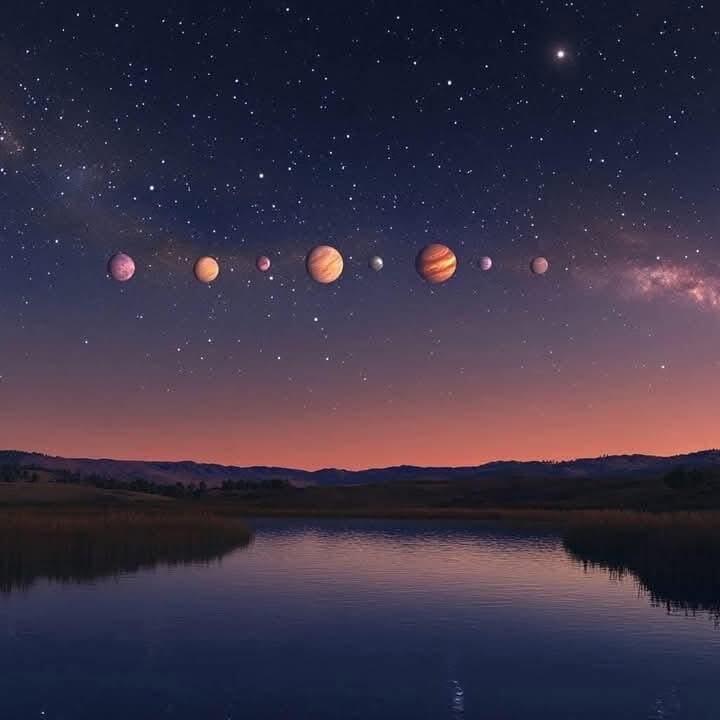Masterpiece ⚡️ on Nostr: On January 21, 2025, a spectacular astronomical event awaits us: six planets will ...
On January 21, 2025, a spectacular astronomical event awaits us: six planets will line up in an impressive row in the evening sky. Mars, Jupiter, Uranus, Neptune, Venus and Saturn will line up in an almost perfect line, four of which (Mars, Jupiter, Venus and Saturn) will be visible to the naked eye.
The ideal viewing time starts around 8:30 p.m., when the planets shine in all their glory.
For the best viewing, find a dark place with little light pollution and a clear horizon. Mars is the highest and can be recognized by its reddish color. Jupiter appears slightly lower down as a bright spot. Venus and Saturn are visible brightly on the western horizon. For Uranus and Neptune, you will need a powerful telescope or binoculars.
To locate the planets more easily, astronomy apps are a great help. The following apps are particularly suitable for Android and iOS:
- SkySafari: This app provides a detailed star map and helps you find the exact location of the planets. It is especially suitable for advanced users.
- Star Walk 2: An easy-to-use app with augmented reality features that shows you the celestial bodies currently present.
- SkyView: Perfect for beginners as it works with your smartphone camera and shows you the visible planets and stars directly.
- Stellarium Mobile: An accurate planetarium app that simulates the sky in real time.
This astronomical masterpiece will remain in the sky for about four weeks, but January 21 is the best day to watch. On February 28, 2025, there will be a chance to see seven planets in a row, with Mercury joining them – an extremely rare event.
Credit James Webb Space Telescope
----------------------------------------
The ideal viewing time starts around 8:30 p.m., when the planets shine in all their glory.
For the best viewing, find a dark place with little light pollution and a clear horizon. Mars is the highest and can be recognized by its reddish color. Jupiter appears slightly lower down as a bright spot. Venus and Saturn are visible brightly on the western horizon. For Uranus and Neptune, you will need a powerful telescope or binoculars.
To locate the planets more easily, astronomy apps are a great help. The following apps are particularly suitable for Android and iOS:
- SkySafari: This app provides a detailed star map and helps you find the exact location of the planets. It is especially suitable for advanced users.
- Star Walk 2: An easy-to-use app with augmented reality features that shows you the celestial bodies currently present.
- SkyView: Perfect for beginners as it works with your smartphone camera and shows you the visible planets and stars directly.
- Stellarium Mobile: An accurate planetarium app that simulates the sky in real time.
This astronomical masterpiece will remain in the sky for about four weeks, but January 21 is the best day to watch. On February 28, 2025, there will be a chance to see seven planets in a row, with Mercury joining them – an extremely rare event.
Credit James Webb Space Telescope
----------------------------------------

